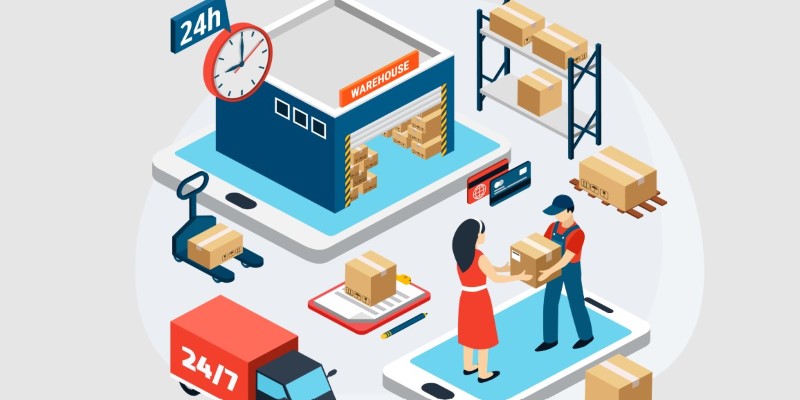Why Local Shopping Is On The Rise And How To Support It
In recent years, there has been a significant shift in how people approach their shopping habits, with a growing emphasis on local businesses. This trend is more than just a fleeting moment; it's a reflection of changing consumer values and priorities. As individuals become increasingly aware of the social, economic, and environmental implications of their purchases, many are choosing to invest in their local communities rather than opting for big-box retailers or online giants. This article examines the factors driving the resurgence of local shopping. It provides practical ways for consumers to support these vital businesses that contribute to the character and vitality of their neighborhoods.
In recent years, there has been a significant shift in how people approach their shopping habits, with a growing emphasis on local businesses. This trend is more than just a fleeting moment; it's a reflection of changing consumer values and priorities. As individuals become increasingly aware of the social, economic, and environmental implications of their purchases, many are choosing to invest in their local communities rather than opting for big-box retailers or online giants. This article examines the factors driving the resurgence of local shopping. It provides practical ways for consumers to support these vital businesses that contribute to the character and vitality of their neighborhoods.
The Shift Toward Local Shopping
Several factors contribute to the resurgence of local shopping. One significant reason is the increased awareness of the impact of purchasing decisions on communities. Many consumers now understand that shopping locally keeps money within the community, helping to create jobs and sustain local businesses. This realization has prompted a movement towards more mindful spending habits, with many individuals making a concerted effort to prioritize local options.

Moreover, the COVID-19 pandemic played a crucial role in reshaping consumer habits. During lockdowns, many people turned to local businesses for their needs, discovering products and services they might have previously overlooked. This shift fostered a sense of community support as consumers realized the importance of sustaining local shops during challenging times. This year, this sense of community continues to resonate, with shoppers seeking to maintain the connections forged during the pandemic.
Economic Impact Of Local Shopping
The economic implications of local shopping cannot be overstated. Research shows that when consumers choose to buy from local businesses, a greater share of that money stays within the community compared to purchases made at large chains. Local businesses tend to source their products from other local vendors, further amplifying the economic benefits. This creates a positive cycle of reinvestment, where profits are spent locally, fostering job creation and boosting community development.

Additionally, local businesses often contribute to the unique character and charm of neighborhoods. They provide a sense of identity, making areas more attractive to residents and visitors alike. By supporting these businesses, consumers help preserve the distinctiveness of their communities, ensuring they remain vibrant and inviting.
Quality And Personalization
Another compelling reason for the rise in local shopping is the quality and personalization that local businesses can offer. Many local shops take pride in curating their products and often prioritize quality over quantity. Shoppers frequently find unique items that are not available in larger retail chains, enhancing their shopping experience.

Personalized customer service is another significant advantage of local businesses. Shoppers are more likely to receive individualized attention from staff who are knowledgeable about the products and invested in their customers' satisfaction. This level of service fosters a sense of connection between consumers and businesses, enhancing the overall shopping experience.
The Environmental Factor
Sustainability has become a critical concern for consumers in 2025. Many people are increasingly aware of the environmental impact of their purchasing choices. Local shopping tends to have a lower carbon footprint, as products often require less transportation. When consumers buy from local vendors, they help reduce the environmental costs associated with long-distance shipping, packaging, and warehousing.

The Role Of Technology
The rise of technology has also significantly influenced the promotion of local shopping. In 2025, numerous platforms and apps connected consumers with local businesses, making it easier than ever to find and support them. Social media, in particular, has become a powerful tool for local businesses to engage with their communities. Many shops use platforms like Instagram and Facebook to showcase their products, share stories, and promote special events, attracting a loyal customer base.

How To Support Local Shopping
Supporting local shopping doesn’t have to be complicated. Here are several practical ways individuals can contribute to the local economy:
Choose Local First
When looking to make a purchase, start by considering local options. Whether it’s groceries, clothing, or home goods, explore what local businesses have to offer before turning to larger chains. Many towns and cities have directories of local businesses, making it easy to find shops in your area.
Shop At Farmers' Markets
Farmers' markets are a fantastic way to support local agriculture and artisans. These markets not only provide fresh produce but also offer handmade goods, crafts, and other unique items. Shopping at farmers' markets supports local farmers and helps promote sustainable practices in food production.
Attend Local Events
Participating in local events, such as festivals, art shows, and community fairs, is another great way to support local businesses. These gatherings often feature local vendors, giving consumers the chance to discover new products and connect with their community.
Use Social Media To Promote Local Businesses
Social media can be a powerful tool for promoting local businesses. Share your experiences at local shops, post photos of unique finds, and encourage friends to support these establishments. Tagging businesses in your posts helps increase their visibility and reach, potentially attracting new customers.
Opt For Local Services
In addition to shopping for products, consider using local services such as restaurants, salons, and repair shops. Dining out at a local restaurant or getting a haircut from a nearby salon not only supports these businesses but also enhances the sense of community.
Give Gift Cards
Gift cards to local businesses make great gifts while encouraging recipients to shop locally. They can be particularly beneficial for businesses struggling to recover from the pandemic, as they provide immediate cash flow while fostering future patronage.
Conclusion
The rise of local shopping reflects a growing awareness of the benefits of supporting local economies. As consumers continue to recognize the positive impact their purchasing decisions can have on their communities, the momentum behind this movement is likely to grow. By choosing to shop locally, individuals not only enhance their shopping experiences but also contribute to the economic, social, and environmental health of their neighborhoods.
In 2025, the importance of local shopping is clear. It represents a shift toward more conscious consumerism, where the focus is on building connections, fostering community, and making choices that align with personal values. Whether it's through quality, sustainability, or personalized service, local shopping enriches lives and communities alike. So, as you make your next purchase, consider how your choices can support the local businesses that make your community unique.